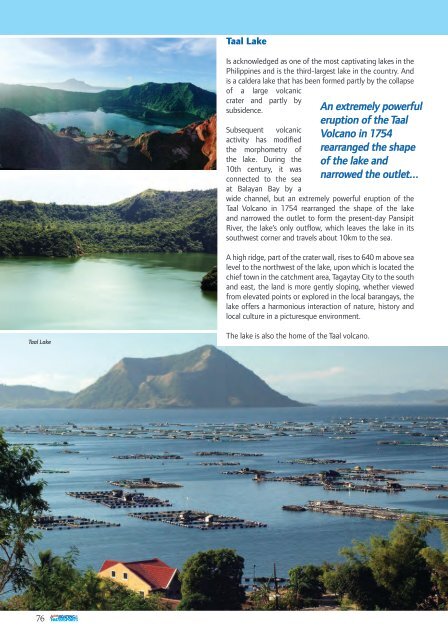ABW March 2024
You also want an ePaper? Increase the reach of your titles
YUMPU automatically turns print PDFs into web optimized ePapers that Google loves.
Taal Lake<br />
Is acknowledged as one of the most captivating lakes in the<br />
Philippines and is the third-largest lake in the country. And<br />
is a caldera lake that has been formed partly by the collapse<br />
of a large volcanic<br />
crater and partly by<br />
subsidence.<br />
Subsequent volcanic<br />
activity has modified<br />
the morphometry of<br />
the lake. During the<br />
10th century, it was<br />
connected to the sea<br />
at Balayan Bay by a<br />
An extremely powerful<br />
eruption of the Taal<br />
Volcano in 1754<br />
rearranged the shape<br />
of the lake and<br />
narrowed the outlet...<br />
wide channel, but an extremely powerful eruption of the<br />
Taal Volcano in 1754 rearranged the shape of the lake<br />
and narrowed the outlet to form the present-day Pansipit<br />
River, the lake’s only outflow, which leaves the lake in its<br />
southwest corner and travels about 10km to the sea.<br />
A high ridge, part of the crater wall, rises to 640 m above sea<br />
level to the northwest of the lake, upon which is located the<br />
chief town in the catchment area, Tagaytay City to the south<br />
and east, the land is more gently sloping, whether viewed<br />
from elevated points or explored in the local barangays, the<br />
lake offers a harmonious interaction of nature, history and<br />
local culture in a picturesque environment.<br />
Taal Lake<br />
The lake is also the home of the Taal volcano.<br />
76

















